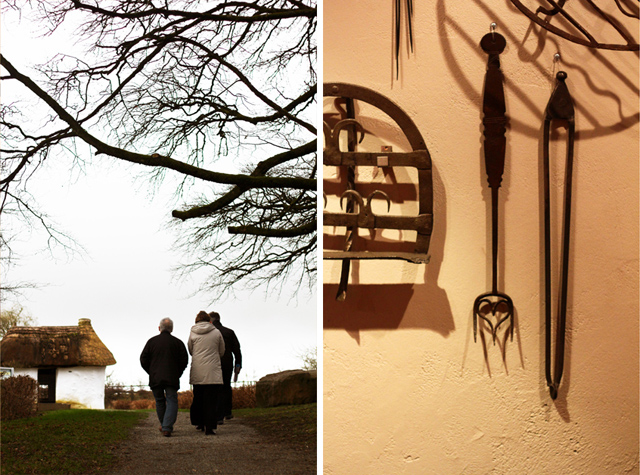
I once read in a book that history isn’t merely a chain of events, but is made up of what we think it to be, as if history has been lived by us because it’s become so connected to our emotions. Almost as if without our reflections, there could be no past.
At the Museum of Country Life in Castlebar, the history of Ireland seems so tied to daily life that there doesn’t appear to be an apparent division between official history and the lives of real people. It’s the past of a population in its entirety, woven like a crude fabric, one that’s strong and whose radical identity has always defeated luck.
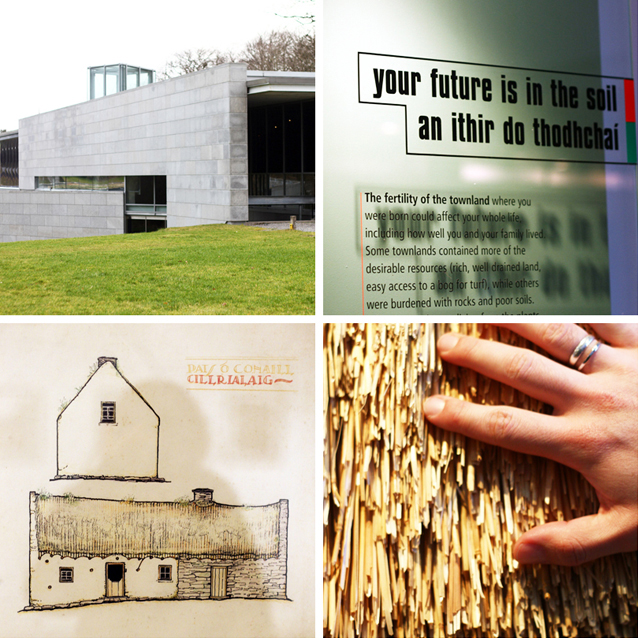
A population that has made a pact with an indomitable nature, full of air, water, earth and above all, spirit. The water from the rivers, fused to the stone of the city, the legends connected to religion, between nature and men there are no distinctions. At Ballina, for example, the fish filled Moy, a bright blue, ancient river, flows along at street level and, when at Ridge Pool, lets fishermen embroider its surface with their hooks,right in front of St. Muredach’s Cathedral, in the heart of the city.
Here, nature and humans make room for one another: at the port of Killala, not far from Ballina, men donning boots take advantage of the evening’s low tide to walk among the boats in the surf, to be reclaimed once again the following morning by the same beautiful water.
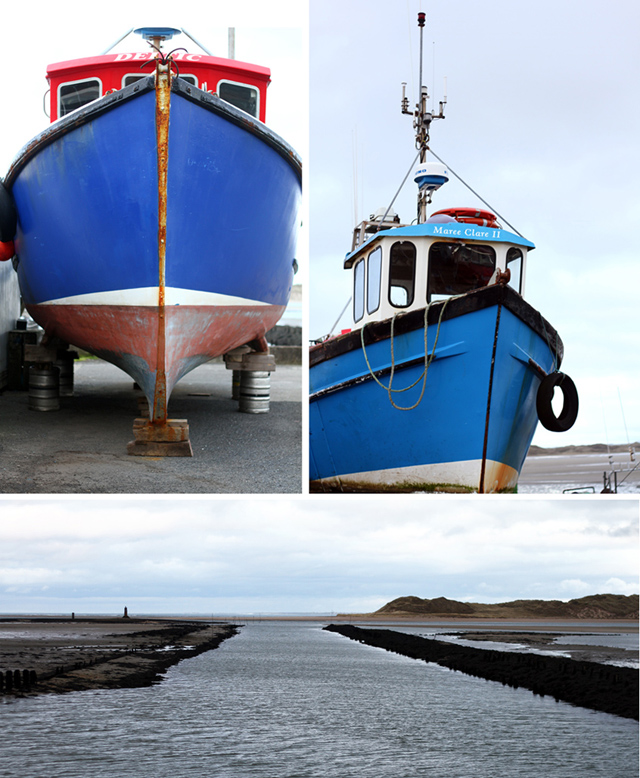
And sometimes you feel that the differences become homogeneous, as if there’s no end or beginning. The profile of Moyne Abbey that can be seen from as far as a country road north of Ballina, is so integrated into the natural landscape that it appears to have been cut out from a photograph around which an artist has designed the landscape. Now its ruins seem made of the same material as the grass, the trees and the nearby bay of Killala.
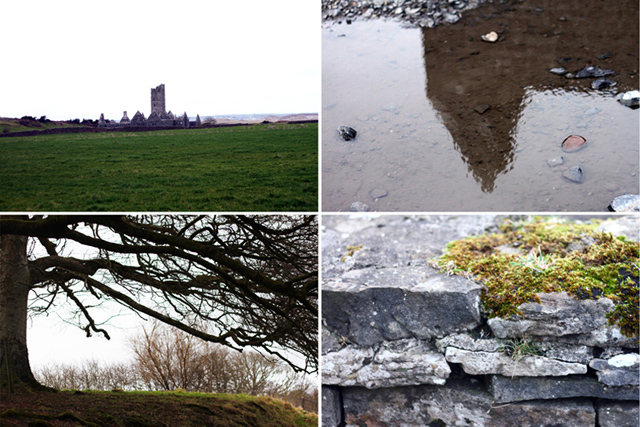
When you arrive at Rosserk Abbey, overlooking the bay, you have confirmation of this ongoing osmosis. The water which creates the monastery’s perfect reflection is so peaceful as to give the impression that nature and history, in that place, have exchanged roles: that is, the bay remains unchanged, unperturbed, yet the ruins are constantly changing their form and consistency, in a stream of spirituality that can’t be interrupted by time.
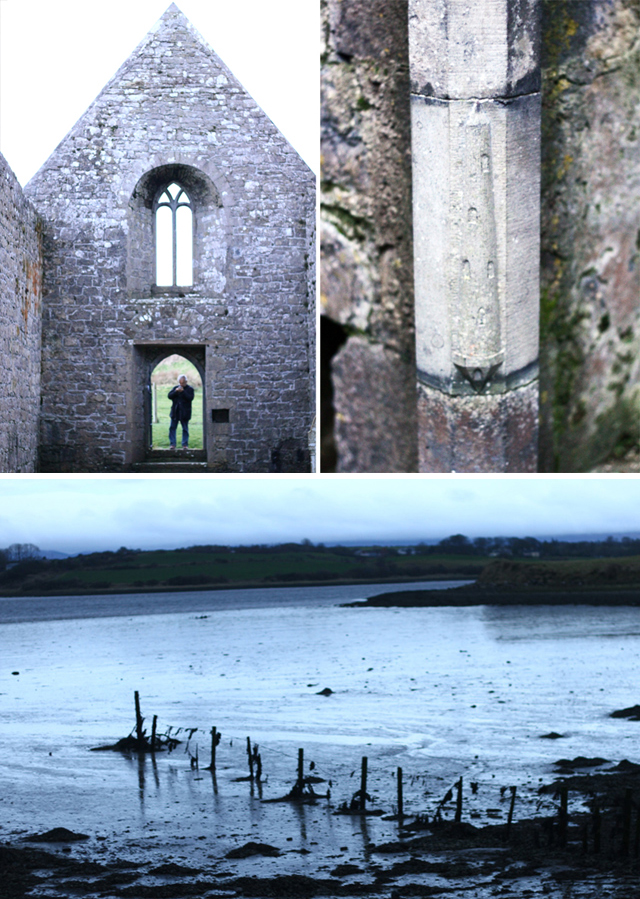
> DAY 2
Western Ireland | Mayo | People | Credits & Links